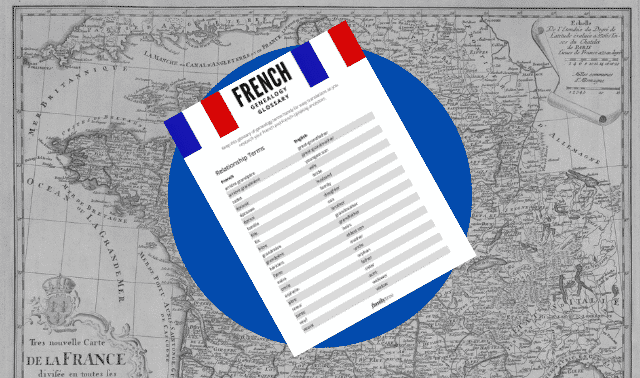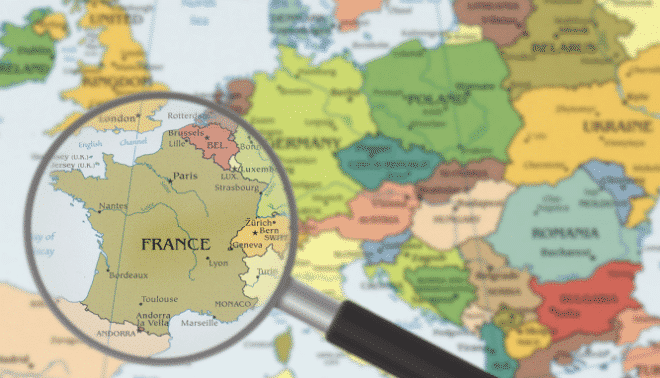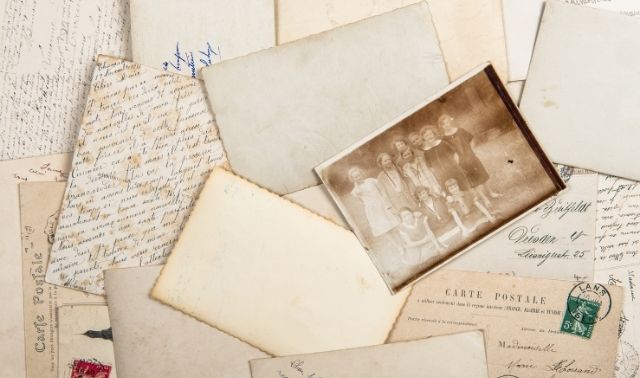
The French were among the earliest Europeans to arrive in North America, with Samuel de Champlain founding the first permanent French colony at Quebec in 1608—only one year after Jamestown.
French settlers left their mark from Montreal to Natchez and St. Louis to New Orleans. Famous French Americans include Louis Chevrolet, Davy Crockett, Paul Revere, John James Audubon, the Du Ponts, Anthony Bourdain and Madonna. Even George Washington had some French ancestors. Today, with over 9 million Americans claiming French or French-Canadian roots, this ethnic group ranks behind only German, English, Irish, Italian and Polish among European ancestries.
If you’re among that number, it’s never been easier to research your French family history without having to go to France. (Feel free to use genealogy as an excuse to visit la belle France, however.) Although privacy restrictions make it tough to find French ancestors born in the 20th century, earlier records—dating back to the 1500s—are increasingly going online with a push from the French government.

Discovering French Ancestors
You’ll need a few basics to get started. First, obviously, most French records are written in the French language. You can copy and paste unfamiliar phrases or even web addresses into Google Translate or Bing. French is also one of the languages covered by the high-powered DeepL, and FamilySearch has a handy guide to French words you’re likely to encounter in your research. You may also find early Roman Catholic registers are written in Latin, and areas that went back and forth between France and Germany (Alsace-Lorraine) and Italy/Sardinia (Savoie, Haute-Savoie, Alpes-Maritimes, Corse) have some records in German and Italian, respectively. (Records might similarly be displaced.)
Be aware, too, that French dates are usually written with the month (not capitalized) in the middle, as in 4 août 1789 (4 August 1789), which would be abbreviated 4/8/1789. You may also see dates written out, rather than in numerals, with the year given first.
The good news about French names is that women typically were listed under their maiden names in records. But you might be confused by “dit” names (more common in French Canada than in France itself), which were second surnames inspired by geography, nicknames or physical characteristics. For example, Pierre Guillet dit Beaulieu would be “Pierre Guillet called (dit) Beaulieu,” with Beaulieu meaning “beautiful place.”
Centuries of Immigration
The French—unlike many groups who came in large waves—immigrated as part of a slow but mostly steady trickle that spanned centuries. A few historical events did temporarily increase the flow.
French Protestants, called Huguenots, fled persecution, which culminated under Louis XIV’s Edict of Fontainebleau in 1685. In a similar vein, the British expelled French residents of Acadia (today’s Maritime Provinces, eastern Quebec and part of Maine) beginning in 1755 if they refused to swear allegiance to the crown. This event, called Le Grand Dérangement, immortalized in Longfellow’s poem “Evangeline,” led some Acadians to settle as far away as Louisiana. The French Revolution of 1789 to 1799 sent so many political refugees to the United States that New York, Philadelphia and Charleston soon had French-language newspapers.
From 1820 onward, about 750,000 French immigrants came to the United States. Emigration from France also spiked after the revolutions of 1830, 1848 and 1852, and following the country’s 1871 defeat in the Franco-Prussian War.
Immigrants to America left from French ports including Le Havre, Marseille, Cherbourg, Bordeaux and Nantes, as well as across the Channel in England, from Liverpool. Only a few departing passenger lists (listes des passagers) have survived and are accessible. For details, visit FamilySearch’s page on French Emigration and Immigration.
You’ll have better luck finding French ancestors in US arrival records, such as those for Ellis Island and Castle Garden. Don’t overlook other ports, such as Boston and New Orleans. Early arrivals can be found in the database on Ancestry.com and the free Immigrant Ships Transcribers Guild.
Cherchez (Search) the Hometown
In France, as in many European countries, knowing an ancestor’s place of origin is crucial to locating relevant records. If US immigration and naturalization records don’t include that information, you’ll need to scour home sources such as letters, old documents and family Bibles, plus obituaries. Quiz your relatives about where in France the family came from. For catholic families, US churches may have records that reference an original French parish.
When you have a geographic clue to pursue, it’s important to understand the jurisdictional map of France. In 1790, the revolutionary country was reorganized from a variety of provinces into government units called départements (departments). Initially 83, the number of departments has fluctuated over time, reaching as many as 130 before settling on today’s 96 (plus five external units, such as Martinique and Guadeloupe in the Caribbean). Departments are often referred to simply by number.
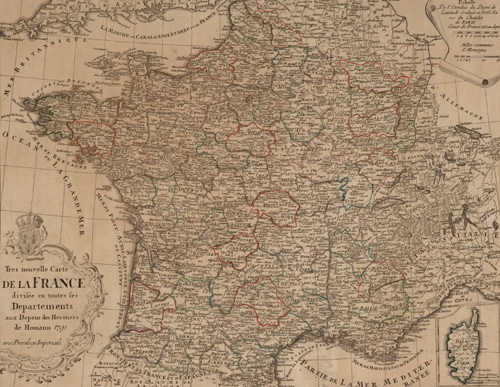
Within each department are many smaller jurisdictions called communes, which might range from tiny villages to cities. The major cities of Paris, Marseille and Lyon are further divided into arondissements (district or commune). Each arondissement has its own town hall (mairie), where records were kept. At the department level, archives are organized by type, then commune, then chronologically.
To learn more about French departments, including links to online resources and archives, see FamilySearch’s clickable list. For a guide to department archives and more, break out your French-English dictionary and visit the archives page of the Département de l’Ain website. For links to pages about each department and its records, visit WikiGenWeb.
Voilà Vital Records!
French government records of births (naissances), marriages (mariages) and deaths (décès or morts) began back in 1792 and were kept by the local commune. Copies of records more than 100 years old are generally also available from departmental archives, which may be online and/or easier to access than dealing with small town halls. More recent records, except for deaths, will require proof of direct descent from the individual referenced.
Department archives and town halls should both have annual and 10-year indexes (tables decennales) of births, marriages and deaths. These are usually alphabetical, though sometimes only grouped by first letter of the surname, and marriage records may be indexed only by the groom’s name.
If the records you need aren’t online, you can try writing to the local commune’s town hall. Send a letter in both English and French, along with a small donation. Note that departmental archives won’t look up records for you or issue copies. If you strike out at the town hall level, consider hiring a local genealogist.
The free FamilySearch site has a few searchable collections of French vital records, mostly mixed with church records. To find vital records in the site’s FamilySearch Catalog, look for “France, [Department], [Commune]—Civil registration,” such as, in the field Place: France, Nièvre, Achun, and Keyword: Civil registration.
The subscription site Ancestry.com has a number of searchable collections of French civil and parish vital records, organized by department. The filters you can use to search vary by collection, from only first and last name to dates and other family members.
The information in French civil registrations is well worth the effort. Birth records typically give the birthplace and date, parents’ names and ages (and sometimes birthplaces), and information about who submitted the information. Look for notes in the margin that might include legitimization (reconnaissance) of births out of wedlock.
Marriage records usually include the date; names, ages, birthplaces, birth dates and occupations of the groom and bride; names of their parents (including mothers’ maiden names); and information about witnesses. Some might list grandparents, deceased spouses, divorces and previous marriages. (Note that civil and church marriage records might be in different locations, as couples had to be married by civil authorities first.)
Death records should list the deceased’s name as well as their place and date of death. Later records might include age, birthplace, occupation and residence, as well as spouse, parents and information on witnesses.
Allez (Go) to the Church
For vital records before 1792, you can turn to records of the Roman Catholic Church, to which the vast majority of French belonged. The Church started officially recording baptisms after a royal decree in the 1500s (though some date as far back as the 1300s), and later added marriages and deaths. Most baptismal records begin with the 1600s, and these and other church vital records continued even after civil registration began. Because church records aren’t subject to the 100-year privacy statute, they might help you find more recent relatives.
Many pre-1792 church records were moved to departmental archives, and some departments are putting these online along with civil registrations. You can also find church records, typically mixed in with civil registrations, in FamilySearch and Ancestry.com collections. French church records have been microfilmed by FamilySearch, and you can locate them in the catalog both by department and commune, such as “France, Aisne—Church records” and “France, Aisne, Courbes—Church records.” Make sure to check both, as those listed by commune are not also catalogued by department and vice versa. Note that you don’t need to know the name of your ancestor’s church to find these microfilms. But if you don’t, you may need to scroll through multiple rolls; each commune typically has several churches, and the records are not indexed.
French church records usually deliver skimpier information than civil registrations: Records of baptisms contain the date; names of the child, parents and godparents; and the family’s place of residence. Marriage records list the date and place, plus the names of the couple, their parents and witnesses. Death records give the date and place, plus the names of the deceased and his or her parents or spouse.
If your ancestors were Protestants, start with the FamilySearch database “France, Protestant Church Records, 1536–1902.” You can also find some Protestant parish registers, primarily from around Paris, on microfilm. Original registers are in departmental or national archives or at the Protestant Historical Society in Paris (Société de l’Histoire du Protestantisme Français, or SHPF).
When researching Jewish ancestors living in France, try the JewishGen databases at and consult this article.
Count on the Census
If you still haven’t been able to pin down an ancestor’s commune, French censuses (recensements) might be able to help. If you’ve already tapped vital records, censuses can help fill in the blanks between key family events, much as in US research.
Although censuses began in France in 1772, these were mostly just headcounts without names. From 1836 on, censuses were conducted every five years and listed everyone in the household by name (women by maiden name) and usually gave ages, marital status and occupations. Note that the every-five-years schedule was bent in 1871 (when the census was postponed to 1872) and skipped in 1916 (because of World War I).
Departmental archives have begun digitizing censuses and putting them online. FamilySearch also has some searchable French censuses, by department, with a few matched with images.
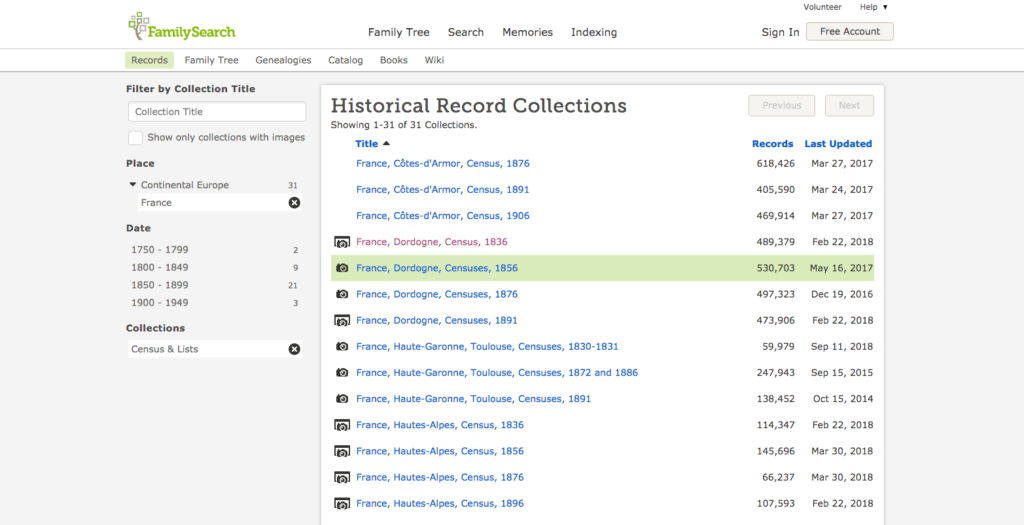
Getting It Notarized
The (potential) brick-wall busters of French genealogy are called “notarial records.” These records kept by a notary—more like a civil attorney than just someone with a notary seal—included marriage contracts, wills, estates, inventories and guardianships, with details of family members and their relationships. Notarial records date back to the 1300s and were required to deposit records more than 125 years old in department archives.
That’s the good news. The bad news is that compliance with the archiving rule was incomplete and notarial records are not commonly indexed—much less online. Only a handful of notarial records have been microfilmed. You’ll need to track down the likely notary’s name (and perhaps that of his successor). Keep in mind that people may have gone to a family notary rather than the nearest one. French genealogical societies can help, as can their periodicals. Try an online search for your ancestors’ department plus the société de généalogie.
Other Records
Still coming up vide (empty) in your French ancestral quest? Here are some other types of records to try:
Military Records
Young men in France may have grumbled about being required to register for military service, but the resulting records (registres matricules) might make their descendants smile. In addition to service details, these usually contain date and place of birth, parents’ names, civilian occupation and physical description.
French departmental archives are putting some of these records online, and FamilySearch has a collection of draft cards from 1867 to 1921. You can learn more about French military history at the Historic Defense Service (Service Historique de la Défense), located in Vincennes, which has files on individual officers dating from the 1700s.
Cemetery Records
Since French cemetery plots are usually leased, rather than owned, tombstones are not as permanent as they are in the United States. You can try the cemetery or the town hall for burial or lease records. Find a Grave has records from more than 10,000 French cemeteries, but many are represented by only a few graves.
Records of Nobility
If your French blood runs bleu, you might find records among the country’s longstanding and well-defined ranks of nobility. (Be aware, however, that many family stories of noble ancestors turn out to be just stories.) Grants of nobility and proof of legitimacy are kept at the National Archives, the National Library, Bibliothèque de l’Arsenal (Library of the Arsenal) and departmental archives. You can also find hundreds of printed genealogies of French nobles, who have been eager to preserve their status. Check the FamilySearch Catalog as well.
The global library catalog WorldCat can help find volumes at libraries near you, or those available through Interlibrary Loan. Ancestry.com also has a four-volume searchable history of nobility (in French).
Dénouement
Now are you ready to explore your French heritage? Bonne chance! And if you do find your research requires a trip to your ancestral homeland—be glad your family came from a place with such good food.
A version of this article originally appeared in the September 2019 issue of Family Tree Magazine. Last updated: January 2025

